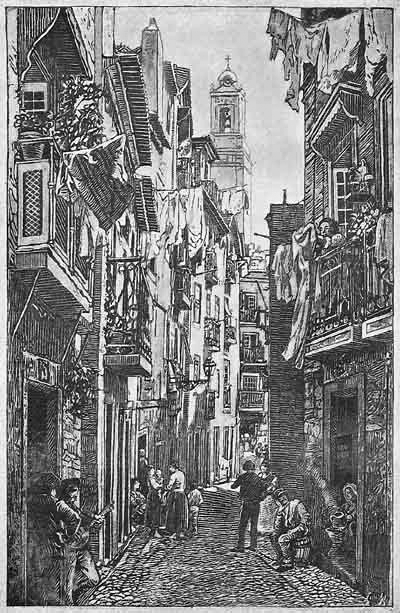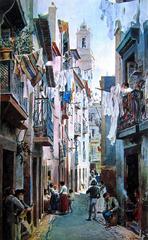
Igreja de Santo Estêvão Lisbon: Visiting Hours, Tickets, and Travel Guide
Date: 14/06/2025
Introduction
Igreja de Santo Estêvão, set atop the Alfama district’s winding streets, is a living monument to Lisbon’s evolution through centuries of change, resilience, and creativity. This guide provides a comprehensive overview of the church’s historical significance, architectural highlights, current visiting hours, ticket information, accessibility details, and tips for integrating your visit with nearby attractions. Whether you’re an architecture enthusiast, a cultural traveler, or a curious explorer, Igreja de Santo Estêvão stands out as a must-see among Lisbon’s historical treasures. (The Geographical Cure; Visit Lisboa; Lisbon Portugal Tourism; Património Cultural)
Table of Contents
- Introduction
- Historical Evolution and Architecture
- Artistic Highlights
- Community and Cultural Importance
- Visitor Information: Hours, Tickets & Access
- Nearby Attractions
- Visitor Tips
- Frequently Asked Questions (FAQ)
- Summary and Recommendations
- References
Historical Evolution and Architecture
Origins and Medieval Foundations
Igreja de Santo Estêvão dates back to the 12th century, shortly after Lisbon’s Christian reconquest in 1147. Originally constructed over a former mosque, the church reflects the city’s transition from Moorish to Christian rule and served as a parish church for Alfama, Lisbon’s oldest neighborhood. Its earliest structure was likely Romanesque, evolving through successive renovations. (Visit Lisboa; pt.wikipedia)
Destruction and Baroque Rebirth
The catastrophic 1755 Lisbon Earthquake dealt severe damage to the church, including the loss of one of its towers. Reconstruction began in 1773 under architect Manuel da Costa Negreiros, resulting in the elegant Baroque church you see today. The design is marked by a restrained yet harmonious façade, a rectangular plan, and a single surviving tower. Its whitewashed exterior, pilasters, and triangular pediment blend seamlessly with Alfama’s historic streetscape. (portugalvisitor.com; Património Cultural)
Interior Features
The church’s interior is characterized by a barrel-vaulted nave, gilded woodwork (talha dourada) on the main altar, and a series of side chapels housing statues and paintings from various periods. The sacristy is adorned with 18th-century azulejos—blue and white tiles depicting biblical scenes—creating a serene and contemplative atmosphere. Renaissance influences are visible in the spatial organization and sculptural details, while later Baroque additions include gilded altarpieces and painted panels. (Visit Portugal; Lisbon Portugal Tourism)
Bell Tower and Views
The surviving bell tower, accessible via a narrow staircase, offers panoramic views over Alfama and the Tagus River—a highlight for visitors seeking a unique perspective on Lisbon. (Atlas Lisboa)
Artistic Highlights
- Gilded Main Altar: Features 18th-century sculptures by José de Almeida, including a dramatic representation of Christ crucified.
- Azulejo Panels: 18th-century ceramic tiles in the sacristy and nave illustrate biblical stories in the distinctive Portuguese style.
- Renaissance and Baroque Details: Grotesque stone carvings, medallions, and Renaissance statues of St. Peter and St. Paul add artistic richness.
- Natural Light: The church’s design maximizes natural illumination, enhancing its contemplative ambiance.
Community and Cultural Importance
Igreja de Santo Estêvão is more than an architectural landmark; it is a vibrant center of community life in Alfama. As an active parish, it hosts religious services, festivals, and events, especially during the Festas de Lisboa in June. The church is closely linked with local traditions such as Fado music—recognized by UNESCO as Intangible Cultural Heritage—and plays a central role in processions and celebrations that fuse spiritual and secular life. The adjacent Miradouro de Santo Estêvão offers some of the best views in Lisbon, attracting both locals and visitors. (UNESCO Fado; Festas de Lisboa)
Visitor Information: Hours, Tickets & Access
- Address: Largo de Santo Estêvão, 1100-505 Lisboa, Portugal
- Public Transport: Tram 28, Bus 734, Santa Apolónia Metro (10-minute walk)
- Opening Hours: As of June 2025, open 10:00 AM – 6:00 PM, Tuesday through Sunday. Closed Mondays and certain religious holidays. Masses are held on Sundays at 11:30 AM and Tuesdays at 6:00 PM, except July–September. (Visit Lisboa; lisbonportugaltourism.com)
- Admission: Free. Donations are welcome to support preservation.
- Accessibility: The main entrance has steps, and Alfama’s steep, narrow streets can be challenging for those with mobility limitations. The terrace is accessible and offers stunning views.
- Visitor Etiquette: Respectful attire is requested; photography is allowed (avoid flash and be discreet during services).
Nearby Attractions
- Miradouro de Santo Estêvão: Directly adjacent, provides panoramic views of Alfama and the Tagus River. (Lisbon Lux)
- National Pantheon: Final resting place of many notable Portuguese figures.
- Monastery of São Vicente de Fora: Renowned for its Baroque tilework and royal pantheon.
- Museu do Fado: A short walk away, exploring Lisbon’s musical heritage. (Museu do Fado)
- Feira da Ladra: Lisbon’s famous flea market, held nearby on Tuesdays and Saturdays. (Time Out Lisbon)
Visitor Tips
- Arrive early or late in the afternoon to avoid crowds and enjoy optimal lighting for photography.
- Wear comfortable shoes for exploring Alfama’s cobbled streets.
- Attend during the Festas de Lisboa in June for a lively experience.
- Use the Audiala app for audio guides, maps, and up-to-date travel tips.
- Combine your visit with a walking tour of Alfama’s historic sites for deeper context.
Frequently Asked Questions (FAQ)
What are the visiting hours of Igreja de Santo Estêvão?
Open 10:00 AM – 6:00 PM, Tuesday through Sunday. Closed Mondays and holidays. Masses: Sunday 11:30 AM, Tuesday 6:00 PM (except July–September).
Is there an entrance fee?
No, entry is free. Donations are appreciated.
Are guided tours available?
No regular tours, but private guides and local tours often include the church.
Is the church accessible for people with mobility impairments?
Access is limited due to steps and Alfama’s terrain; terrace is more accessible.
Can I take photos inside the church?
Yes, but use discretion and avoid flash during services.
Summary and Recommendations
Igreja de Santo Estêvão stands as a testament to Lisbon’s resilience, artistic excellence, and living traditions. Its Baroque interior, panoramic bell tower, and integration with Alfama’s community life make it a rewarding destination for visitors. Plan your visit around Mass or during festivals for an authentic experience, and combine your trip with nearby attractions for a comprehensive exploration of Lisbon’s historic heart. For navigation, insights, and self-guided tours, download the Audiala app and stay updated on local events.
References
- The Geographical Cure
- Visit Lisboa
- Lisbon Portugal Tourism
- Património Cultural
- Visit Portugal
- Lisbon Lux
- pt.wikipedia
- Atlas Lisboa
- portugalvisitor.com
- Festas de Lisboa
- UNESCO Fado
- Museu do Fado
- Time Out Lisbon



























































